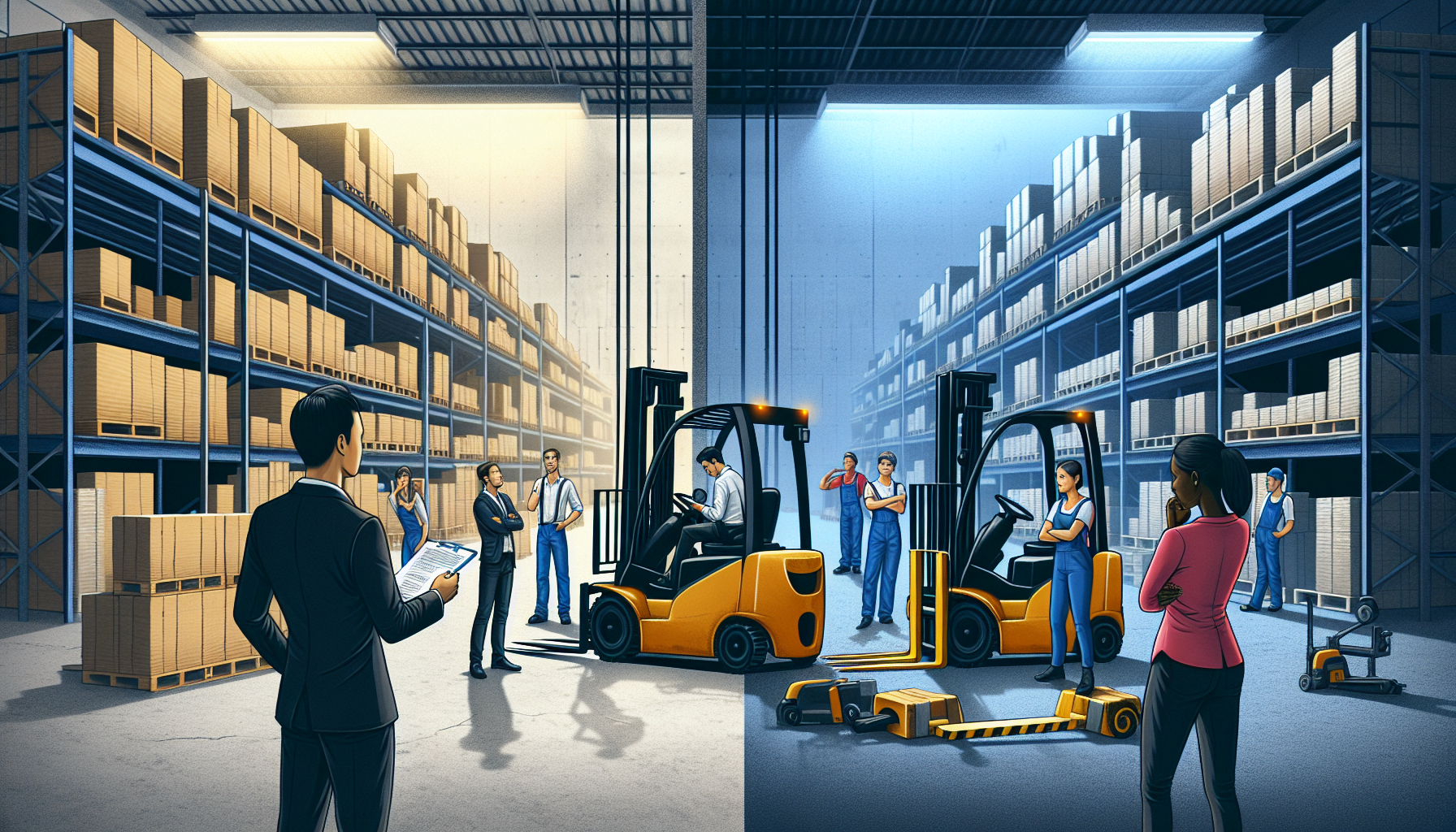When it comes to managing a fleet of forklifts, one of the key decisions you’ll have to make is whether to lease or buy the equipment. Both options have their advantages and it’s important to weigh them carefully before making a decision. In this article, we will explore the benefits of leasing vs. buying forklifts for your fleet.
Flexible Financial Options with Leasing
Leasing offers a number of flexible financial options that can be tailored to your specific needs. With a lease, you can avoid large upfront costs and spread the expense over a period of time. This can be especially beneficial for businesses with tight budgets or limited capital.
Additionally, leasing allows you to easily upgrade your forklift fleet as technology and your needs change. As new models with advanced features are introduced, you have the flexibility to replace your leased forklifts with newer, more efficient models. This ensures that you always have access to the latest equipment without having to bear the burden of selling or trading in older forklifts.
Furthermore, leasing provides tax benefits for your business. In many cases, lease payments can be deducted as operating expenses, reducing your overall tax liability. This can result in significant cost savings when compared to the depreciation and interest expenses associated with buying forklifts.
No Ownership Stress with Leasing
One of the biggest advantages of leasing forklifts is that you don’t have to worry about ownership. The leasing company is responsible for maintenance, repairs, and other services, allowing you to focus on your core business operations. This can save you time, money, and resources that would otherwise be spent on managing and maintaining the equipment.
Leasing also eliminates the risk of obsolescence. In industries where technology quickly evolves, owning forklifts can become a liability as new and improved models are introduced. By leasing, you can easily adapt to changing demands and upgrade to more advanced equipment when needed, without the hassle of selling or disposing of outdated forklifts.
Financial Control and Long-Term Investments with Buying
While leasing offers flexibility, buying forklifts provides you with long-term ownership and control. When you purchase a forklift, it becomes a tangible asset for your business. You have the freedom to use it as needed, modify it to meet specific requirements, and even sell it when no longer needed.
Buying forklifts can be a smarter financial decision if you have the capital available and plan to use the equipment for an extended period of time. Over time, the cost of purchasing a forklift may be lower than the cumulative expenses associated with leasing over the same duration.
Furthermore, buying gives you complete control over maintenance and repairs. You can choose the service provider, schedule maintenance at your convenience, and ensure that the equipment is always in optimal condition. This can contribute to increased productivity and minimize downtime due to unexpected breakdowns.
It’s worth noting that ownership also comes with additional responsibilities. You’ll need to account for depreciation, storage, insurance, and other operating costs. These factors should be considered when evaluating the financial feasibility of buying forklifts for your fleet.
Forklift fleet management can often play a significant role in the decision-making process, and it’s important to consider all aspects before making a final decision.
Conclusion
Whether you choose to lease or buy forklifts for your fleet, there are pros and cons to each option. Leasing offers flexibility, reduced upfront costs, and the ability to upgrade technology easily. On the other hand, buying provides long-term ownership, control, and potential cost savings in the long run. Consider your specific business needs, budget, and future growth plans to determine the best option for your forklift fleet management strategy.

